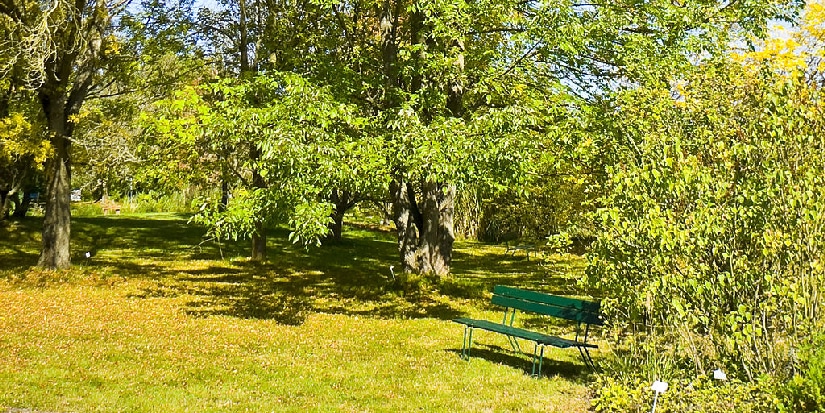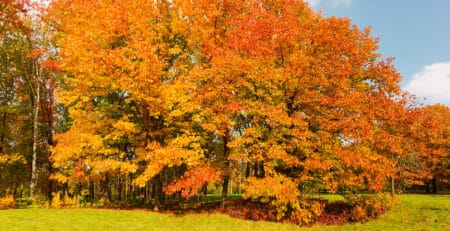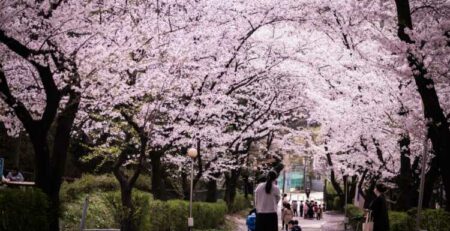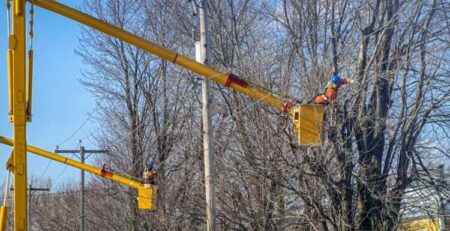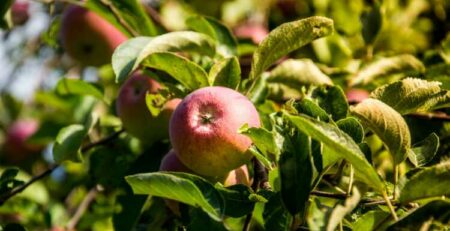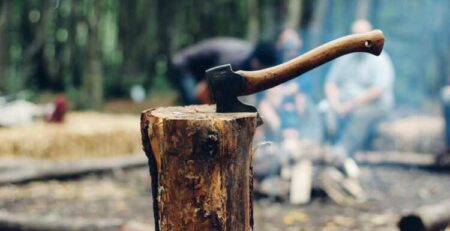White Ash Tree (Fraxinus Americana)
You’ve probably seen the White Ash in parks, yards, and other recreational areas in its beautiful yellow to maroon and deep purple fall colours- well, now you can put a name to it! The White Ash is native to North America and is found throughout the region. It is the world’s largest ash species. The woody plant has an oval crown in open areas while it is narrow and pyramidal in forests but grows rounded as it matures.
The tree derives its name from the pale, silvery undersides of its leaves as well as the pale bark of its branches and twigs. The White Ash is likely to be planted alongside the Swamp Chestnut, Sweetgum, Loblolly Pine, Cherry bark Oak, and the Willow. In the West, though, it is usually found with Yellow Poplar, Basswood, Black Cherry, and Oak trees. It can sometimes also extend into Beech-birch Maple Forests.
It attracts butterflies, pollinators, and even songbirds and is best propagated by seeds. The most remarkable feature of the White Ash is its resistance to fire, drought, deer, urban conditions, and wet soil. Still, it is vulnerable to many pests and diseases, including the Emerald Ash Borer, which is spreading very fast, critically endangering the White Ash. Nevertheless, researchers believe that the tree might survive this attack owing to a few resistant ‘lingering ash’ trees.
The White Ash is similar in appearance to the Green Ash, making it hard to identify. However, the two species grow in different locations – the White Ash is a forest tree while the Green Ash prefers riparian and disturbed areas. Furthermore, the White Ash almost always has precisely seven leaflets per leaf which help differentiate it from other ash species.

Hardiness Zone
The White Ash grows in hardiness zones 4 through 9. It is usually found in rich upland to lowland woods. The tree grows best in full sun and moist, well-drained soils like mountain coves or river bottomlands.
Type of Tree
The White Ash Tree is considered a shade as well as an ornamental tree. The classification is a deciduous tree with a spreading canopy that blocks sunlight while lending an attractive feel to the landscape. It has a woody life cycle. Moreover, ash trees have separate male and female trees, of which only the female variety bears fruit. You might think this would slump the males’ popularity, but it does quite the opposite! Male trees are preferred because they don’t involve the hassle of fruit picking, which is a massive plus for trees near a walkway. However, the females remain a notch above as the fruits add a pleasing touch to the trees, not to mention edible and super yummy.
The flowers of the White Ash are usually purple or green and bloom in the Spring. They are tubular-shaped and grow as tight panicles. These flowers, though, don’t have any petals because they would hinder pollination. The deciduous leaves of the White Ash are oppositely arranged with around five to nine but mostly seven leaflets each. Each leaflet has ¼ to ½ inch stalks and is 2 to 6 inches long. They may be stalked, toothed, or non-toothed.

Moreover, the golden yellow or purplish lavender leaves are smooth and turn yellow to maroon and deep purple in the Autumn. The leaves of the White Ash are around 8-12 inches in length but almost invariably longer than 6 inches. Also, they are compound pinnate and come in Lanceolate, Oblong, Ovate, or Obovate leaf shapes. No hair growth is observed on the leaf surface.
Upright, spreading stems that are a bit flattened near the leaf origin are characteristic of the White Ash tree. The stems have a moderate diameter and are not aromatic. The bark is light brown or gray and appears corky, furrowed, and ridged. The fruit is one-winged, flattened samara with a rounded, full seed cavity that matures in the fall and even persists in the winter!
The White Ash has many cultivars, some of which are mentioned below:
- Autumn Applause is a densely branched tree that is maroon-coloured in the fall with dropping foliage.
- Autumn Blaze is a female tree that is purple-coloured in the fall and has a light fruit set.
- Autumn Purple is a seedless male tree with purple-red foliage in the fall and, of course, no fruits. Fall colour lasts about two to four weeks.
- The Chicago Regal is a rapidly growing tree with purple-coloured leaves in the fall.
- Greenspire is an upright, narrow plant that reaches 40 feet in height and 30 feet in width and has a dark orange colour in the fall.
- Jeff nor is a seedless variety known for its resistance in the face of winter.
- Rose Hill is a tall deciduous tree that flourishes in full sunlight. It is a seedless male, has dark green foliage, and can tolerate lime soil.
- Skycole grows symmetrically to about 50 feet in length. It has a strong central leader with glossy green leaves that turn red or orange in the fall.
Full Size
The White Ash is the largest of the native ash trees and tends to grow to a height of fifty to eighty feet with a spread of almost forty to fifty feet. Hence, the tree needs a space of approximately 60 feet. However, it can even attain a height of 120 feet in some areas. The mature tree is upright, somewhat pyramidal, and has a rounded crown.

Growth Rate
The tree grows moderately with a one to two feet annual increase. If the tree remains safe from disease and pathogens, it can live to be 200 years old.
Sun Preference
The White Ash ideally needs a full sun which means at least six hours of direct, unfiltered exposure. Although mature trees are shade-intolerant, seedlings are shade tolerant and can grow well at 3% less than the optimum sun exposure for many years.

Soil Preference
The White Ash is very demanding in terms of soil moisture and fertility. These requirements can be satisfied by soils derived from parent materials-limestone, alluvium, fine glacial till, shale and basalt. The tree typically grows on fertile soils with a high nitrogen content and medium to high calcium content. If nitrogen is not present in an adequate amount, the seedling’s dry weight diminishes by 38% compared to seedlings given proper nutrition. Sulphur is also very important for tree growth. The White Ash can tolerate pH from 5 to 7.5- both acidic and alkaline.
Soil moisture is another important growth factor. White Ash trees grow best on moderately well-drained, light-textured soils with glacial drift. The soil may be sandy to clay loam, so roots can penetrate to a depth of 40cm or 16 inches into the ground. The tree is even tolerant of temporary flooding. As far as the topographic situation is concerned, the White Ash is found in different topographic regions.

Attributes of a White Ash Tree
Here are some interesting facts about the White Ash Tree:
- It can be easily transplanted and established.
- Only female flowers develop into fruit and produce a handsome yellow to deep purple and maroon leaf colour in the fall.
- Its flowers bloom in April.
- Yields 1-2 inch samaras that resemble canoe paddles.
- Multiple cultivars are available.
- It doesn’t like harsh conditions.
- It can live up to 200 years so long as it doesn’t succumb to the disease.
- With a central leader trunk and evenly spaced branches, this tree is very good for shade. It is a shady tree but less used than the Green Ash.
- It is also known as American Ash, Biltmore Ash, Biltmore White Ash, and Cane Ash.
- When the leaves fall in Autumn, the tree twigs develop a sort of crescent-shaped scar.
- The tree can be grown and harvested within 11 years.
- Its wood is very tough due to dense straight grains. It can bend without breaking and will usually only break under very high pressure.
- The tree is commonly found in parks, playgrounds, large yards, and big open areas.
- Its shade is light enough to allow grass to grow underneath it.
- It needs to be pruned in the fall.

Wildlife Value of White Ash Trees
It is an excellent food source for many animals. For example, birds, squirrels, turkeys, bobwhites, finches, grosbeaks, cardinals, grouse, mice, and small mammals feed on the seeds of White Ash. White-tailed deer eat its foliage, and it is a larval plant for Mourning Cloak Butterflies and the Tiger Swallowtail. The tree also yields edible fruit. Additionally, since ash trees grow with a cleft or central cavity, they are a good habitat and nesting place for many wildlife creatures and secondary nesters, especially woodpeckers. After the woodpeckers vacate, the area might be occupied by owls, wood ducks, gray squirrels, or nuthatches.
In addition to this, the Common Morel, which is one of the best mushrooms, sometimes grows under the White Ash in Spring. The bark of young trees is occasionally used as a food source by beavers, porcupines, and rabbits. Native White Ash trees of North America are critical as a food source for frogs, particularly tadpoles. Because of the lack of tannins, the frogs can easily feed on the leaves as they fall in Autumn.

The History & Folklore of White Ash Trees
Due to its immense popularity as a timber source, the White Ash has been incorporated into many ancient mythologies. Some have even believed it possesses the power to ward off snakes. In ancient folklore, it is considered the ‘World Tree’ or the tree of healing- some even think it’s the tree from which humans were created from! It has often been associated with the overall health of the world. The Ash tree’s plight and the challenges it has to face due to the Emerald Ash Borer are somehow linked with the challenges we have to face as humans. Before Emerald Ash came into the picture, tree literature indicates that the White Ash was not very disease prone and could be planted very easily. And it’s right because you can even find it growing on slopes!
But how and where did the Emerald Ash come from? Well, it is an exotic beetle, so it makes sense to wonder where it came from. It was first confirmed near Detroit in 2002 and probably arrived in the US on the infected packaging material in airplanes or cargo ships from Asia. And then it spread to North America through infected firewood, ash logs, ash nursery stock, or some other ash products- that is the most plausible theory! It was first confirmed in New York in 2009.
But that’s not all! Historical books indicate that the White Ash was an ‘elf tree’ associated with medieval witchcraft. The tree is governed by the sun, and its winged seeds accord protection against hostile magic. Druids of the ancient world carried ash wands. Ashwood and seeds have even been used for healing and prosperity magic. In Hoodoo tradition, ash leaves are associated with protection and spells and can help you get the love of your life- much like a love potion.
Ancient people would put ash leaves in their vehicles to prevent accidents, like an evil eye ornament! Also, They would keep them on people to prevent disease. European folklore includes a way to rid yourself of warts almost instantaneously- all you need is ash tree bark and a piece of bacon! The Ogham tradition entails Ash’s health, strength, protection, courage, and a connection to the sea. As the world tree, it is linked to the idea of the world’s natural cycles and natural forces. Legends also believe that the White Ash can be a means of summoning a magical being through transformation.

Care Tips For White Ash Trees
Do you want to grow a White Ash Tree?
It is very much possible to grow a White Ash from a seed, and the chances of success are even higher if you take seedlings instead. Seedlings, too, will grow best in full sunlight, but they can readily tolerate shady periods. The best time to plant a White Ash is early Autumn. A thing called Ash Yellows or Ash Dieback can seriously damage White Ash trees. It occurs between 39 and 45 degrees latitude, and if you reside in between these points, you should probably consider planting another tree.
If you’ve planted White Ash in a suitable location, care is not very laborious. The White Ash Tree is medium maintenance, and just a few key practices are enough to ensure the tree’s success. Provide regular irrigation, especially during the first year after transplantation. But never fertilize a White Ash Tree as fertilizer is generally not recommended for native trees. Chemical-based fertilizers are very high in Phosphorus, and thus, you should steer clear of them and just stick to native plant food.
Unfortunately, White Ash is vulnerable to many pests and diseases, and anyone looking to plant the tree must be prepared for a potential attack beforehand. If you’re seriously considering planting an ash tree, be sure to consult a tree expert.

Which Pests And Diseases Attack The White Ash Tree?
The White Ash Tree is vulnerable to several different pests and diseases, so they are no longer encouraged as plantation options. One such pest is the Emerald Ash Borer which bores into the wood and feeds on the inner bark or phloem portion where all the tree’s nutrients pass through. By attacking under the bark and destroying the phloem tissue, the insect can effectively cut off the tree’s nutrient supply and cause it to starve to death. It is nearly impossible to eradicate the pest, and it can kill an ash tree within 3 to 5 years of infestation. The only remedy at present is to apply insecticide treatments to seize borer damage, that too only if the damage is not too severe. The chemical treatment needs to be applied at certain time intervals for it to work, and thus, it’s best to turn to a professional horticulturist or arborist for assistance.
Other potential pests that can affect the White Ash Tree are:
- Oyster Shell Scale
- Lilac Borer/Ash Borer
- Carpenter Worm
- Fall Webworms
- Ash Sawflies
- Ash Spider Mite
- Ash Plant Bug
- Leaf Miners
- Ash Leaf Curl Aphid
- Pear Sawfly or Pearslug
- Leafcutter Bees
Some diseases that can affect the White Ash Tree include:
- Ash Rust
- Ash Decline
- Fungal Leaf Spots
- Anthracnose
- Cankers
- Ash Yellow
- Verticillium Wilt
- Powdery Mildew
White Ash trees are not tolerant to high salt concentrations and can’t survive drought if they’re grown in a confined. Brittle branches are susceptible to damage by ice, snow, and strong winds.

Uses of The White Ash Tree
White Ash is one of the most useful trees for everyday products, explaining why it is the most cultivated and in-demand variety. Wood from the White Ash is hard, tough, heavy, and thus suited for a wide variety of wood products, including the baseball bat. It has a high value for fuelwood because of its high density. No other wood has these qualities of strength and pliancy that is characteristic of the Ash. Additionally, it is used for tool handles, furniture, pallets, tennis rackets, gardening tools, paddles, snowshoes, hockey sticks, polo mallets, church pews, oars, and skis. It is also used for interior flooring to make arrows, lobster traps, and the bodies of solid electric guitars. In the 1900s, the wood was even used for ceiling fan blades.
Also, Ashwood is used to treating snake bites. Native Americans would even use water distilled from White Ash as a diuretic. Another historical medicinally important use of this tree was to decoct the leaves in white wine to help break kidney stones. Also, the leaves can help treat jaundice. Some tribes even used it as a laxative to treat itching of bug bites, as an aphrodisiac, and as a childbirth tonic for women. Books of ancient medicine also mention that ash bark infusions or tinctures help lax or atrophied tissues. Large doses are purgative in the sense that it makes you vomit. For more than a century, White Ash Tree parts have been used for treating swollen, enlarged, or prolapsed tissues. One tribe even drank water from the tree’s bark as a “refresher.”
Final Thoughts On The White Ash Tree
The White Ash is one of the most beautiful trees with its distinct fall colour that transforms the green foliage into a stunning maroon/purple. And it’s also one of the most useful trees both medicinally and otherwise. The wood is almost as special as the tree itself and won’t break if you bend it. And to add on, the tree is pretty easy to grow and doesn’t require a lot of maintenance- apart from pest control, of course!
The only downside to this tree is the potential damage caused due to pests, but there are ways to tackle it, and we must make all efforts to protect the species. It might seem like a hassle, but it is worth it!

